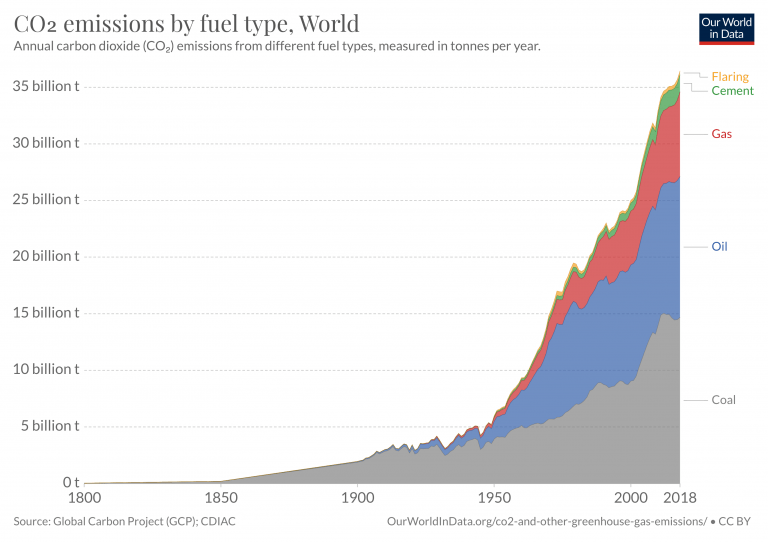Curtesy: ourworldindata.org
Coal, oil, gas, cement: where do CO2 emissions come from?
Carbon dioxide emissions associated with energy and industrial production can come from a range of fuel types. The contribution of each of these sources has changed significantly through time, and still shows large differences by region. In the chart we see the absolute and relative contribution of CO2 emissions by source, differentiated between coal, gas, oil, flaring, and cement production.
At a global level we see that early industrialisation was dominated by the use of solid fuel—this is best observed by switching to the ‘relative’ view in the chart.
Coal-fired power at an industrial-scale was the first to emerge in Europe and North America during the 1700s. It wasn’t until the late 1800s that we begin to see a growth in emissions from oil and gas production. Another century passed before emissions from flaring and cement production began.
In the present day, solid and liquid fuel dominate, although contributions from gas production are also notable. Cement and flaring at the global level remain comparably small.
The trends vary significantly by region. Overall patterns across Europe and North America are similar: early industrialisation began through solid fuel consumption, however, through time this energy mix has diversified. Today, CO2 emissions are spread fairly equally between coal, oil and gas. In contrast, Latin America and the Caribbean’s emissions have historically been and remain a product of liquid fuel—even in the early stages of development coal consumption was small.1
Asia’s energy remains dominant in solid fuel consumption, and has notably higher cement contributions relative to other regions.2
Africa also has more notable emissions from cement and flaring; however, its key sources of emissions are a diverse mix between solid, liquid and gas.




